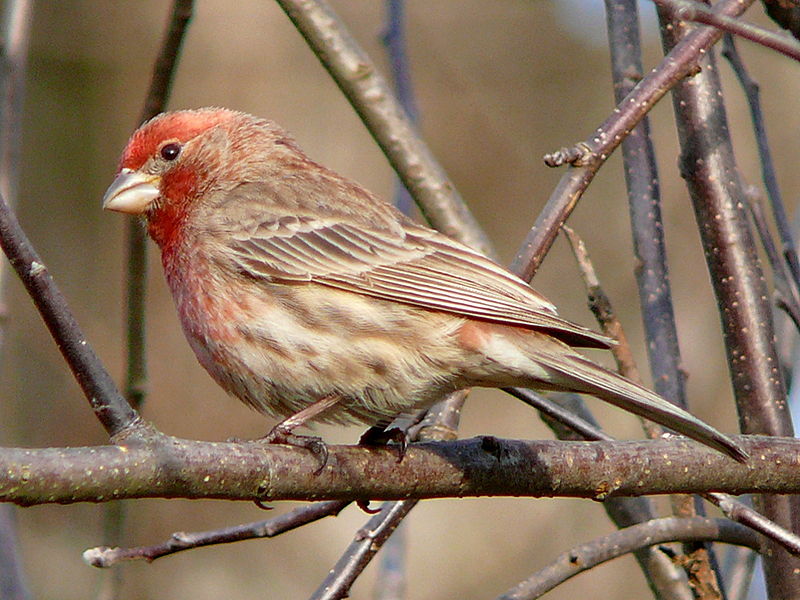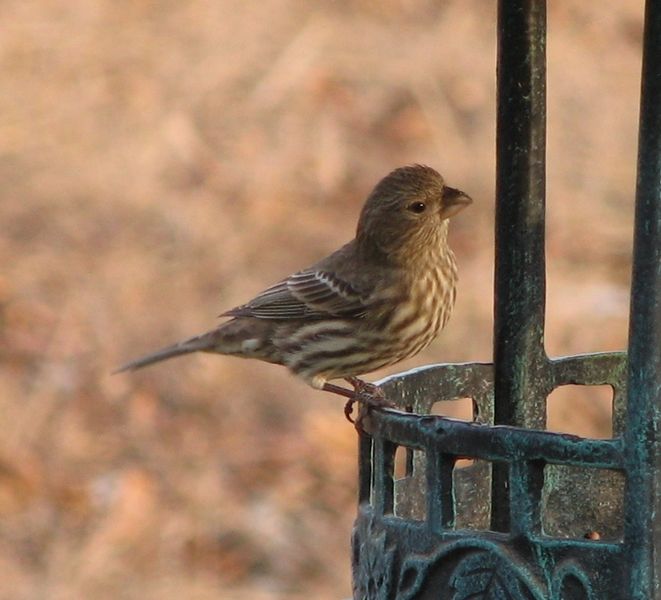house finchCarpodacus mexicanus
Identification:
The males and females in this slightly larger than sparrow sized species are quite different, an example of “sexual dimorphism.” Both have large beaks and streaked breasts, but females are all grayish brown and light colored, while males have a lot of red on the face, breast, sides, and rump. This species is a western bird mainly adapted to arid environments, but was released from a Long Island pet store in 1939 and has since become one of the most common birds throughout North America. Behavior: The House Finch diet consists almost entirely of seeds and plant matter, even for the young; this is unusual. This bird will forage on the ground and readily eats from feeders, especially sunflower seed. It often associates with other house finches in flocks. What brings it to the SBG? Food, cover, nesting sites. The House Finch is very adaptable when it comes to nesting, so while trees suffice, it will just as readily use a building or an old flower pot. When can I see it? Year-round. |


